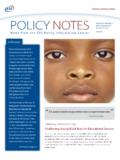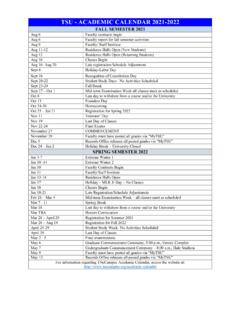Transcription of Evaluation Guide for Older Programs
1 CDC STEADI: Evaluation Guide for Older Adult Clinical fall Prevention Programs Stopping Elderly Accidents, Deaths & Injuries CDC STEADI: Evaluation Guide FOR Older ADULT CLINICAL fall PREVENTION Programs | 2019 2 CDC STEADI: Evaluation Guide FOR Older ADULT CLINICAL fall PREVENTION Programs | 20193 CDC STEADI: Evaluation Guide for Older Adult Clinical fall Prevention Programs By Gwen Bergen, PhD, MPH,1 and Iju Shakya, MPH1, 2 1 Division of Unintentional Injury Prevention National Center for Injury Prevention and Control Centers for Disease Control and Prevention Atlanta, Georgia 2 Oak Ridge Institute for Science and Education (ORISE) fellow to the Centers for Disease Control and Prevention 2019 CDC STEADI.
2 Evaluation Guide FOR Older ADULT CLINICAL fall PREVENTION Programs | 2019 4 This document is a publication of the National Center for Injury Prevention and Control of the Centers for Disease Control and Prevention: Centers for Disease Control and Prevention Robert R. Redfield, MD, Director National Center for Injury Prevention and Control Debra Houry, MD, MPH, Director Division of Unintentional Injury Prevention Grant Baldwin, PhD, MPH, Director Home, Recreation, and Transportation Branch Ann Dellinger, PhD, MPH, Branch Chief Home and Recreation Injury Prevention Team Robin Lee, PhD, MPH, Team Lead ACKNOWLEDGEMENTS We acknowledge and appreciate the important contributions of Elizabeth Burns, Erin Parker.
3 Robin Lee and Celeste Chung for their guidance in preparing and organizing the contents of the Guide . We also thank Elizabeth Eckstrom, Daniel Kidder and Briana Moreland for their thoughtful review and constructive feedback in finalizing the Guide . Suggested Citation: Bergen G, Shakya I. CDC STEADI: Evaluation Guide for Older Adult Clinical fall Prevention Programs . Atlanta, GA: National Center for Injury Prevention and Control, Centers for Disease Control and Prevention, 2019. Reference herein to any specific commercial products, Programs , or services by trade name, trademark, manufacturer, or otherwise, does not necessarily constitute or imply its endorsement, recommendation, or favoring by the United States STEADI: Evaluation Guide FOR Older ADULT CLINICAL fall PREVENTION Programs | 20195 Table of ContentsIntroduction.
4 6 Framework Steps Framework Step 1. Engage stakeholders ..9 Framework Step 2. Describe the program .. 12 Framework Step 3. Focus the Evaluation design ..15 Framework Step 4. Gather credible evidence ..20 Framework Step 5. Justify conclusions ..26 Framework Step 6. Ensure use and share lessons learned ..28 Evaluation Management ..30 References ..31 Appendix: Worksheets ..33 CDC STEADI: Evaluation Guide FOR Older ADULT CLINICAL fall PREVENTION Programs | 20196 Falls among adults aged 65 and over ( Older adults ) are common and costly.
5 In 2016, falls led to about 3 million emergency department visits, 962,000 hospitalizations, and 30,000 Falls are often accompanied by loss of independence, reduced mobility, and fear of Additionally, the annual medical cost associated with falls and fall deaths is an estimated $50 To address the burden of falls among Older adults, the CDC developed an initiative called STEADI (Stopping Elderly Accidents, Deaths, and Injuries) based on the American and British Geriatrics Societies' clinical fall prevention ,5 The STEADI initiative helps healthcare providers develop a standardized process for screening patients for fall risk, assessing the at-risk patient s modifiable risk factors, and intervening to reduce the identified risk using effective risk factor-specific ,7 CDC s Coordinated Care Plan to Prevent Older Adult Falls offers insight into implementation of a STEADI-based clinical fall prevention program.
6 And provides primary care practices with tips and strategies needed for successful The Evaluation Guide for Older Adult Clinical fall Prevention Programs is a companion to the Coordinated Care Plan. While the Evaluation Guide focuses on evaluating Programs implemented in primary care settings, STEADI-based Programs can be implemented in different healthcare settings and this Guide can also be used to evaluate those Programs . CDC recommends using the Coordinated Care Plan and the Evaluation Guide simultaneously for implementation and Evaluation purposes, Importance of Clinical fall Prevention Programs CDC s STEADI initiative encourages clinical fall prevention by providing resources for healthcare providers, Older adults, and caregivers on how to reduce fall ARE PREVENTABLE: Use the Coordinated Care Plan and the Evaluation Guide simultaneously to implement and evaluate a STEADI-based clinical fall prevention STEADI.
7 Evaluation Guide FOR Older ADULT CLINICAL fall PREVENTION Programs | 20197 Why evaluate your program?Evaluating STEADI-based Programs can help providers and organizations increase the quality of care provided to their Older patients, streamline implementation, demonstrate program-related successes, identify areas for improvement, and prioritize future needs ( , budget). The purpose of this Evaluation Guide is to describe key steps to measure and report on the success of implementing a STEADI-based clinical fall prevention program. The Guide , based on the CDC Framework for Program Evaluation in Public Health9,1 0 and other program Evaluation guides,11-19 uses the following framework steps to help you develop an Evaluation plan (Figure 1): Framework Step 1.
8 Engage stakeholdersFramework Step 2. Describe the programFramework Step 3. Focus the Evaluation designFramework Step 4. Gather credible evidenceFramework Step 5. Justify conclusionsFramework Step 6. Ensure use and share lessons learnedEach step is an important component of the Evaluation , and they are not always completed in order. Evaluators often go back and forth between steps and may find themselves revisiting earlier steps based on new information or decisions made in later steps. For example, a group might describe their program before engaging stakeholders, then revise the program description based on stakeholder feedback.
9 In addition, the Framework includes the following standards to Guide evaluators at each step in the Evaluation . These standards should be revisited and reviewed throughout the Evaluation process to ensure that Evaluation is focused, ethical, and unbiased. Utility: the Evaluation is useful and serves the needs of the intended users Feasibility: the Evaluation is realistic, prudent, diplomatic, and frugal Propriety: the Evaluation is conducted legally, ethically, and with regard for the welfare of those involved in the Evaluation as well as those affected by the Evaluation results Accuracy: the Evaluation uses and reports accurate data and information Improve your program Showcase program successes Prioritize future needs Evaluation HELPS: CDC STEADI.
10 Evaluation Guide FOR Older ADULT CLINICAL fall PREVENTION Programs | 20198 ENGAGE STAKEHOLDERS AT ALL STAGESUSE PROJECT DESCRIPTION AND LOGIC MODEL THROUGHOUTE ngage stakeholders at all stagesUse project description and logic model throughoutFigure 2 shows the six Evaluation framework steps in greater detail, and this Guide will describe how each step can be used to evaluate a STEADI-based clinical fall prevention program (referred to as " fall prevention program" from here on). Additionally, an appendix with worksheets has been included to help you develop your Evaluation 1.
















